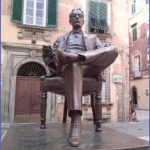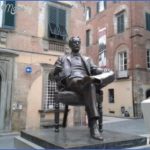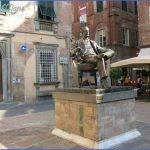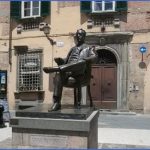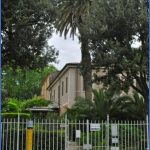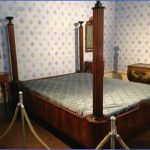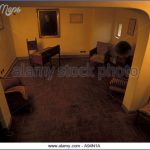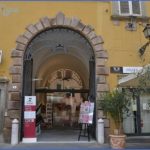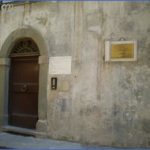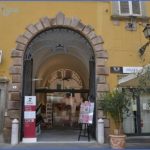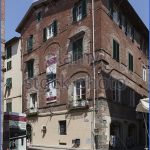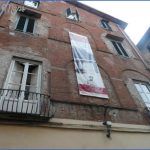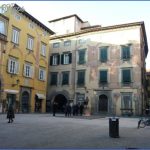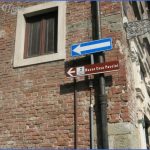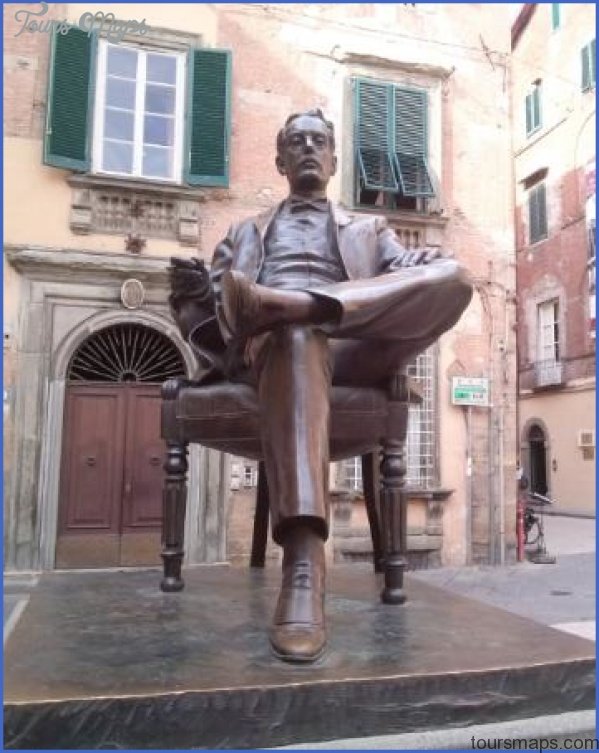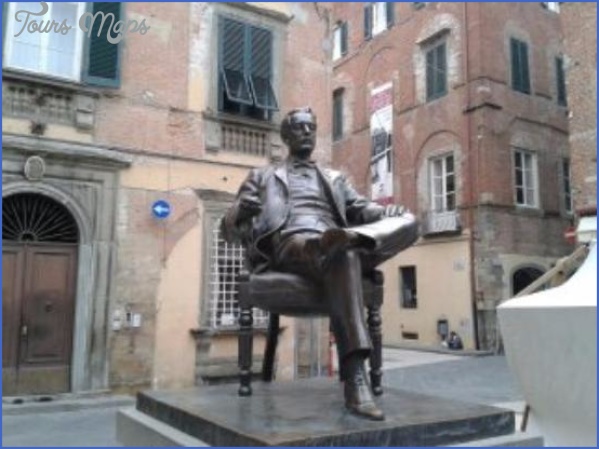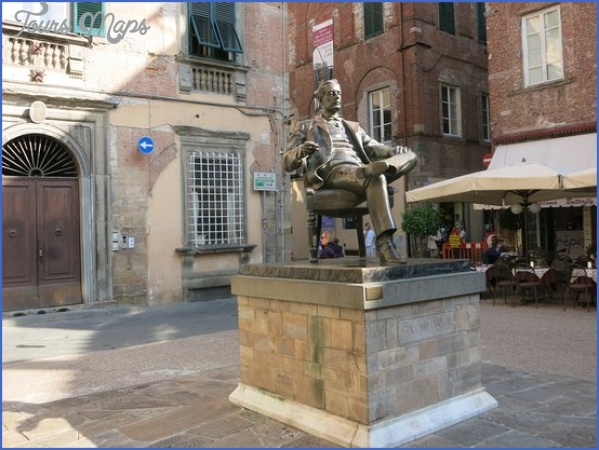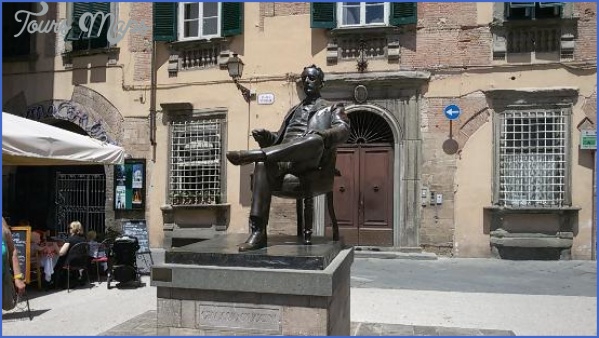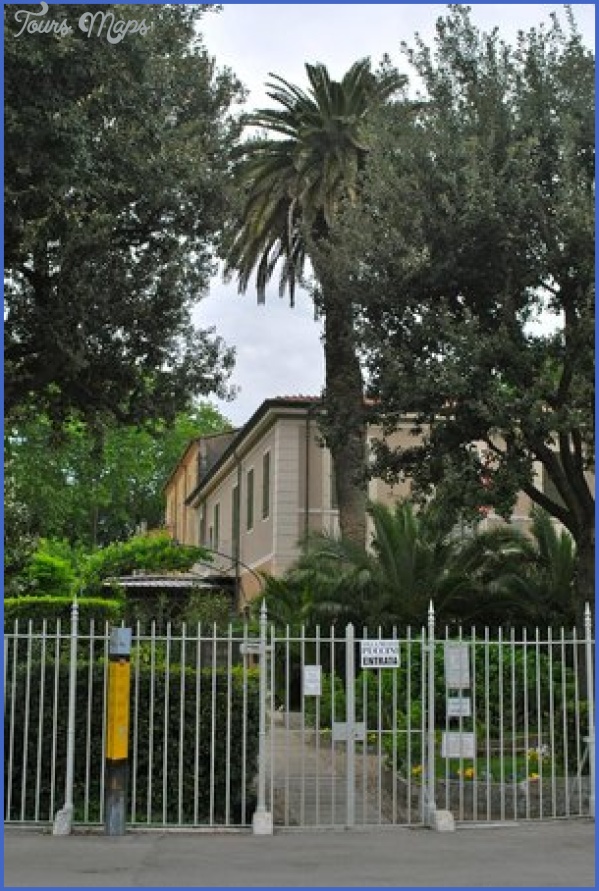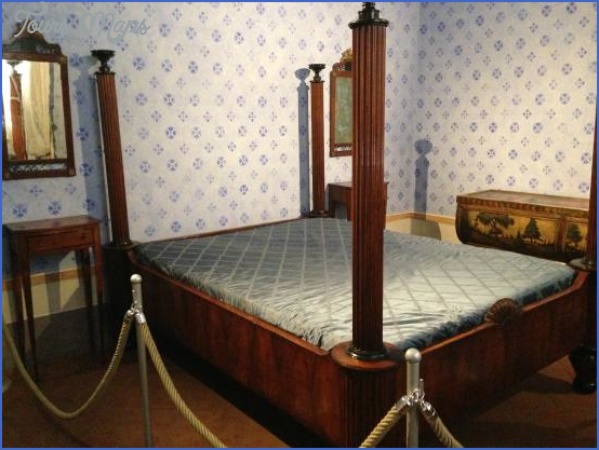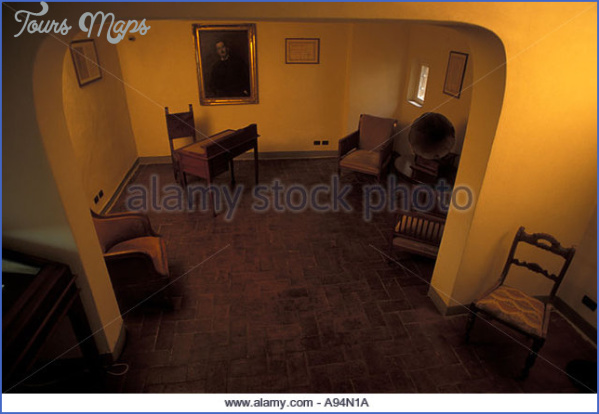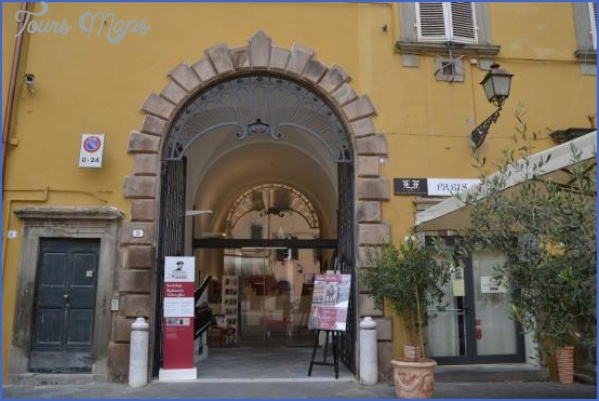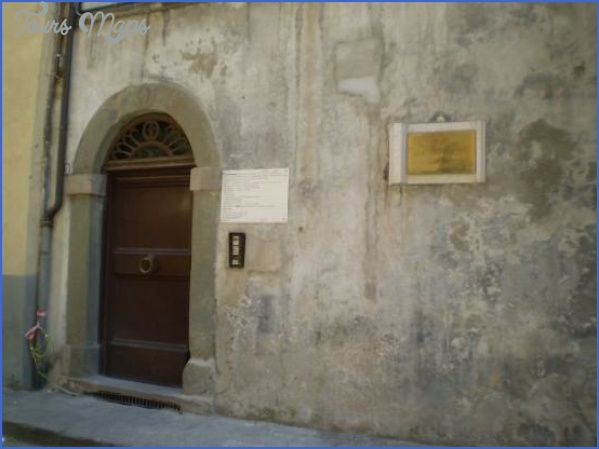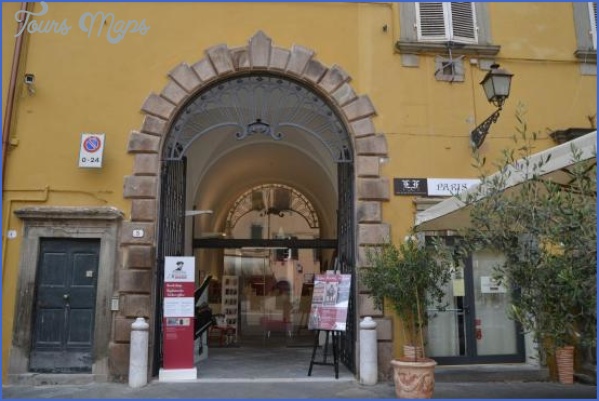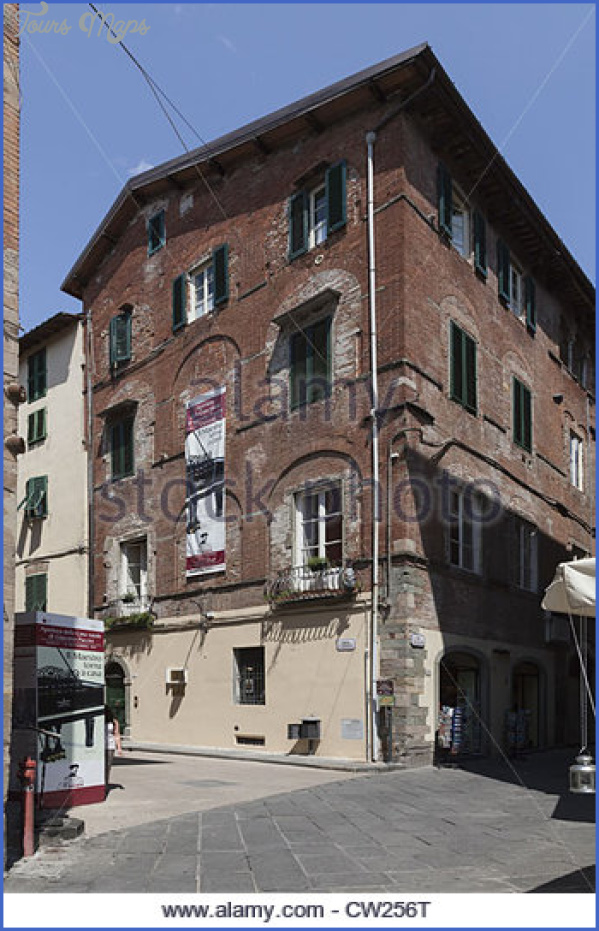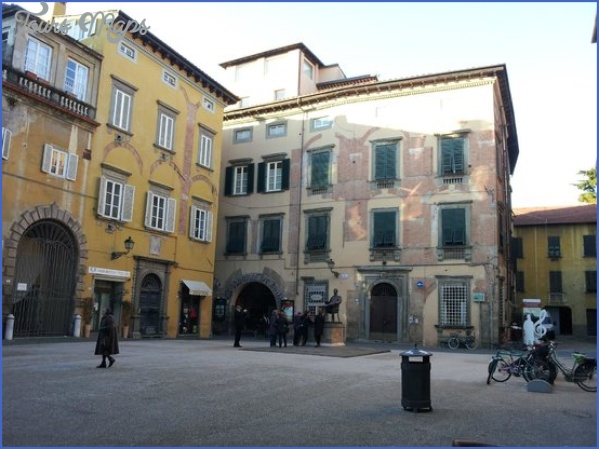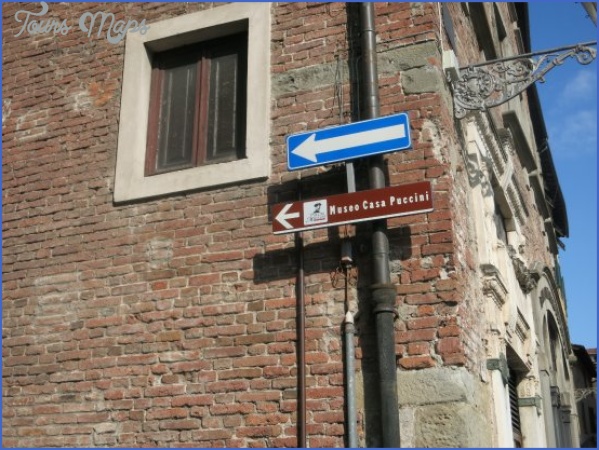PUCCINI MUSEUM
In no country is nationality as localized as it is in Italy. Giacomo Puccini was not just an Italian composer but a Lucchese: he was born in the Tuscan city of Lucca and lived close to it all his life. Visiting the city and its vicinity and moving from one of his houses to another places him and his music firmly in context. A useful, pictorial ‘Itinerari Pucciniani’ is available from the Azienda di Promozione Turistica Lucca.
Puccini came from a family of Lucchese musicians going back five generations. The first composer called Giacomo Puccini lived from 1712 to 1786 and was organist of the Cappella Palatina and the cathedral of San Martino. His son Antonio (1747-1832) inherited his father’s appointments, and Antonio’s son Domenico (1772-1815) in turn also held ecclesiastical musical posts. Domenico’s son Michele (1813-64) resumed the tradition of occupying the organist’s seat at San Martino, and after Michele’s early death his son Giacomo (b 1858) was expected to do the same. The seat was in fact kept warm for him by his uncle, but the inclinations of this particular Puccini were more to the stage than the organ loft.
He was however born just off the central piazza of Lucca, in Corte S Lorenzo, a modest stone’s throw from San Michele (where civic functions took place), close to San Paolino (after the city’s patron saint) and not far from San Martino: all of them churches with which the family had connections. The large, rambling second-floor flat, acquired by the family about 1815, is now a civic museum to the composer, and another part forms the headquarters of the Fondazione Giacomo Puccini.
The museum has eight display rooms, some of them evocatively furnished in the style of his time, with music from the operas supplying a background. Among the items on display are the Steinway that Puccini used during the composition of Turandot, an old overcoat of his (‘vecchia zimarra’), some fine family pictures from the 18th century (Giacomo, his wife and his son Antonio) and the well-known portrait of Puccini done by Leonetto Cappiello in 1899. There is a fine collection of original letters between Puccini, his wife and his son and also his publisher Ricordi. His desk and his phonograph are there. Several original manuscripts, mostly of early works, are
PUCCINI MUSEUM Photo Gallery
Puccini statue and birthplace (the house at centre right), Lucca displayed, and stage and costume designs for the operas, as well as some original costumes (one from Turandot in New York, given by Maria Jeritza). Opera posters and photos, medals, certificates and newspaper reviews are also shown. A plaque was erected on the front of the house soon after Puccini’s death. The Puccinis owned another property, a country farmhouse built in 1585 in the village of Celle, tucked away in the hills north of Lucca, and in the family since the 17th century; Puccini’s great-great-grandfather Giacomo was born there in 1712. As a child Giacomo spent his holidays there. It was set up as an informal museum in 1976 and today it houses Puccini relics, including the bed in which he is said to have been born, the baptismal clothing and the crib used by many of the Puccini children, the piano he is thought to have used when composing La fanciulla del West, a phonograph presented to him by Thomas Edison and Japanese recordings that he was given, along with many letters and other documents as well as orchestral parts of Le villi and a bust of his father. Puccini loved the rural solitude and last visited the house on 26 October 1924, travelling by mule, only a month before his death from throat cancer. The local Comune erected a white marble plaque to commemorate the visit.
Not far away is the mountain village of Chiatri, where in 1898 Puccini bought and rebuilt an old farmhouse with views of Lake Massaciuccoli and the sea: his ‘dream house’, built at huge cost from the proceeds of Manon Lescaut and La Boheme, in a Tuscan dialect of the Gothic style with materials imported by mule. It is now a private house.
On the edge of Lake Massaciuccoli, however, at Torre del Lago (or Torre del Lago Puccini, as it is now), stands the most famous of all Puccini’s homes. He built this villa too in 1898 as his wife and stepdaughter found the isolation at Chiatri disagreeable. The site was close to Viareggio, a seaside resort some 20 km from Lucca; he had lived in Torre del Lago in a tatty old house in 1891 while composing Manon Lescaut. Now he could readily afford something a good deal grander, so he bought and demolished the old house and built a new one on the site. It is not in fact excessively grand in scale, but it embodied, and still does, work of a fanciful kind by famous designers of the time: a fireplace by Galileo Chini, Art Nouveau with an oriental flavour, cherubs with garlands by Plinio Nomelli and Ferruccio Pagni, furnishings by Bugatti and Tiffany, and elaborate coffered ceil-
The Puccini family house at Celle Puccinis villa at Torre delLago Puccini ings in red, blue and gold in the Gothic Revival manner. The chrysanthemums in the garden recall his elegiac string quartet, Crisantemi. Puccini lived here intermittently from 1898 until 1921, though he was away during most of World War I because of the disturbance from a refinery on the lake. Tosca, Madama Butterfly and La fanciulla were written there, at least in part. On the ground floor are his furniture and his piano, with many personal effects, among them his hunting gear (including boots and a range of guns: for illustration see p.43), stuffed birds, countless photographs (many of them autographed), letters and awards. There is a further exhibition area outside the house, an aging glass conservatory with rattan blinds, not untouched by the elements (or the local cat population), where more photographs, manuscripts and the conversation books to which he had recourse after his throat operation are, at any rate for a while, to be seen. Restoration of the building, including the upstairs rooms, is planned.
The most remarkable object within the museum is Puccini himself. The first hint of his personal presence may be gleaned from the affecting Grossi portrait, hanging in the corner of the main room, painted only weeks before his death on 22 November 1924; below it are photographs of his body and a death mask, cradled in velvet in a glass case. In the centre of the house is a chapel, transformed from a sitting room to a mausoleum in 1926, where the composer (brought first from Brussels, then Milan) and his wife are interred and where his son Antonio and his wife eventually joined them. That is surely one way to ensure the permanence of your museum.
A month after Puccini’s death the people of Torre del Lago erected a memorial plaque on the north side of the villa; later, in front of it, a landscaped piazza was created where souvenir sellers ply their trade. In the summer of 1930 the first Puccini Festival here was held, in a new open-air theatre, but in 1968 it moved to a larger site nearby, north of the harbour; opera can be seen there in late July and during much of August, and a vocal competition is held annually for the Puccini Prize. There are plans to create there a ‘Puccini park’ embodying a new, large open-air lakeside theatre and a smaller indoor one.
In 1900 Puccini was made an honorary citizen of Viareggio. His last villa, where he composed Turandot, was on the edge of the town, by the pinewood running along the coast, at the corner of Via Marco Polo and Via Buonarroti; it is not open to the public. Both the villa and the Gran Caffe Margherita (where his ‘Club Gianni Schicchi’ regularly met) bear memorial plaques. As a result of a long-delayed legal judgment handed down at the end of 2002, the villa passed into the possession of the Italian state, and the possibility of its becoming a further, more modern Puccini museum, as has long been under consideration, became a little firmer.
Maybe You Like Them Too
- Explore Doncaster, United Kingdom with this detailed map
- Explore Arroyito, Argentina with this Detailed Map
- Explore Belin, Romania with this detailed map
- Explore Almudévar, Spain with this detailed map
- Explore Aguarón, Spain with this detailed map

